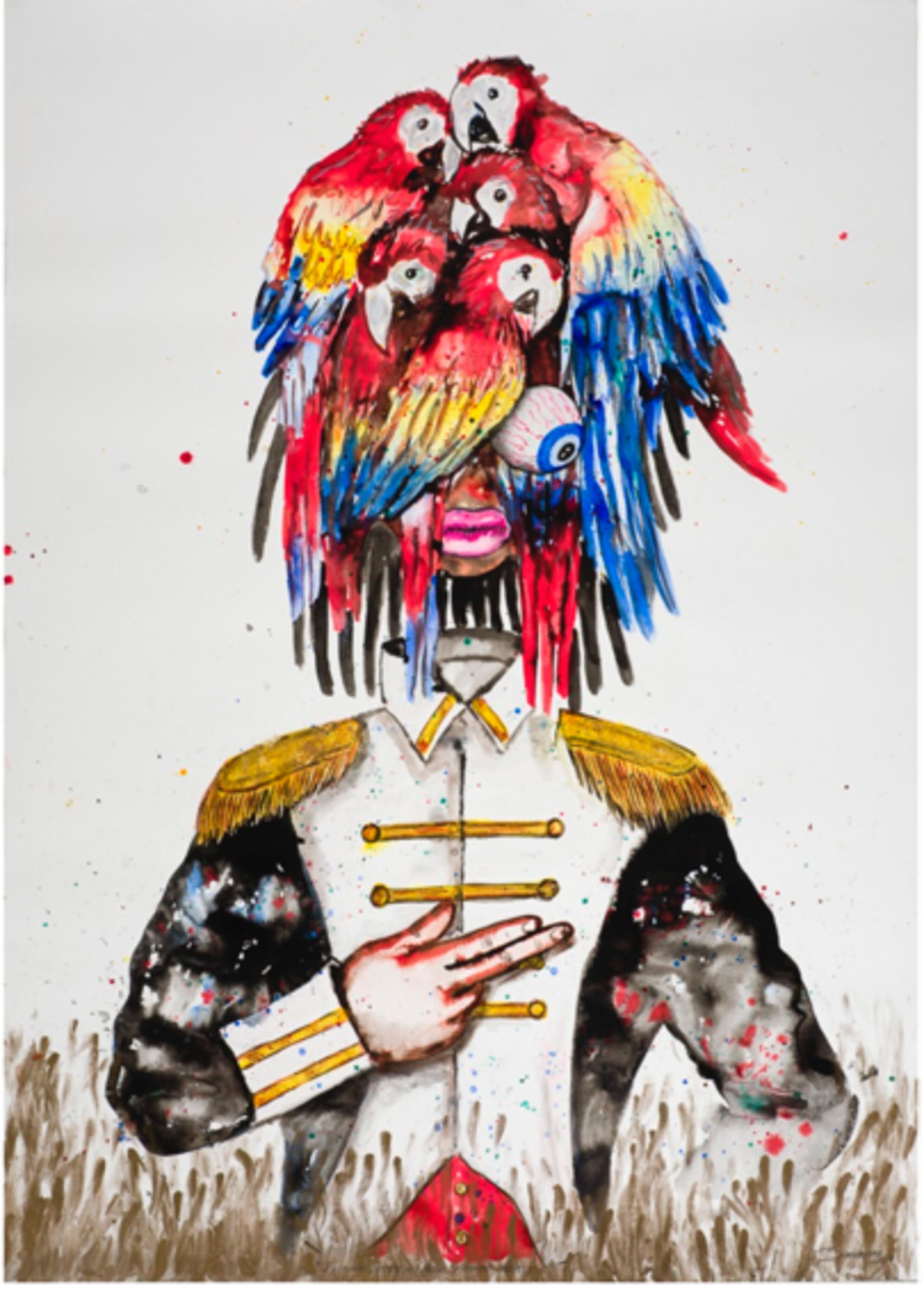International artists tackle global crises

Plastic bottles, computer parts, buzzing flies circling decay and beaches streaked with acrid black oil register as a new kind of colonialism in the stunning Michael C. Carlos Museum of Emory University exhibition “And I Must Scream: The Monstrous Expression of Our Global Crises.” It’s a challenging, multifaceted show centered on topics including climate change, political corruption, consumption and the legacy of war and colonialism in Africa.
The old colonialist tropes of occupying armies and looted national resources may have changed over time, but the effects remains. “And I Must Scream” documents colonialism in new trappings in landscapes deformed by pollution and Africa as a dumping ground for the Western world’s mess of toxic computer parts and unwanted waste. This impressive and far-reaching show brings a welcome dose of contemporary work to a museum more known for its emphasis on art of the ancient world.

The 10 artists featured in “And I Must Scream” touch on themes from the COVID-19 pandemic to human rights violations and hail from Africa, Asia, England, Europe and America (including one Atlanta artist, Amie Esslinger). They offer resistance and a frank assessment of the ongoing interconnected threats posed by climate change and consumerism in this group exhibition organized by the Carlos’ curator of African art Amanda H. Hellman.
“And I Must Scream” takes its title from writer Harlan Ellison’s short story “I Have No Mouth, and I Must Scream,” and conveys a sense of outrage and anger at a world deformed by human greed. The image of the monster looms large in “And I Must Scream,” but it’s a monster, the exhibition affirms, we can see our own reflection in. Eerie portraits created by Steve Bandoma address war and terror in his birthplace, the Democratic Republic of Congo. His luridly colorful drawings have a cartoonish quality flecked with the grotesque and evoke the ugly history of colonialization in the country, but also the DRC’s ongoing eruptions of violence and corruption. Bandoma’s works “Ex Commandant” and “Perruche perruque” blur the lines between oppressed and oppressor and center on garishly outfitted military figures set upon by flies or colorful birds who can recall both the historic Belgian occupiers of Congo and the various rebel militias that have arisen in their wake.

Some of the most arresting work in the show comes midway through, from artist Fabrice Monteiro of Benin descent on his father’s side and Belgian on his mother’s side. Monteiro dresses his models in monstrous costumes crafted from waste: plastic bottles and fishing nets, animal skulls and turtle shells that give them the aura of spiritual deities instructing humankind on its devastating crimes against nature.
The artist creates haunting works on the precipice between the human and the wild, often staging his dramas at the ocean’s edge to comment on environmental degradation where he lives in Dakar, Senegal. Monteiro creates hybrid creatures combining elements of the natural world and the human one as in his photograph “Prophecy #8″ where his monster wears a face mask and headdress that look forged from tar and oil slicks and drags plastic fishing nets out of the ocean, plastic bottles of detergent caught up along with a horseshoe crab. It’s a disturbing image of feckless human destruction of nature that Monteiro has observed firsthand in the ravaged, polluted landscape of Dakar.

Despite the overwhelmingly despondent-bordering-on-grim tone of works in this exhibition, there are moments of hope. A respite comes in the show’s final room, a kind of refreshing palate cleanser that offers a feeling of play and release despite all that has come before. There, Cambodian-American artist Anida Yoeu Ali debuts her charming “Buddhist Bug” photo series for the first time in the United States. The endless traffic cone-orange “bug” is worn like a Halloween costume by various human occupants, its long tubular form seen in classrooms, landscapes and buildings throughout Cambodia. In Ali’s hands the bug is a kind of creepy-cute envoy for a whimsical spirit of kindness as corrective to the country’s history of conflict and brutality.
VISUAL ART REVIEW
“And I Must Scream: The Monstrous Expression of Our Global Crises”
Through May 15. 10 a.m.-4 p.m. Tuesdays-Fridays; 10 a.m.-5 p.m. Saturdays; noon-5 p.m. Sundays. $8; $6 senior citizens, students and ages 6-17; free for members, Emory students, faculty, staff and children 5 and under. Michael C. Carlos Museum, 571 S. Kilgo Circle, Atlanta. 404-727-4282, carlos.emory.edu.
Bottom line: A visually arresting, powerful show, international in scope, about the interconnected global crises that define the planet, from disease to climate change.

